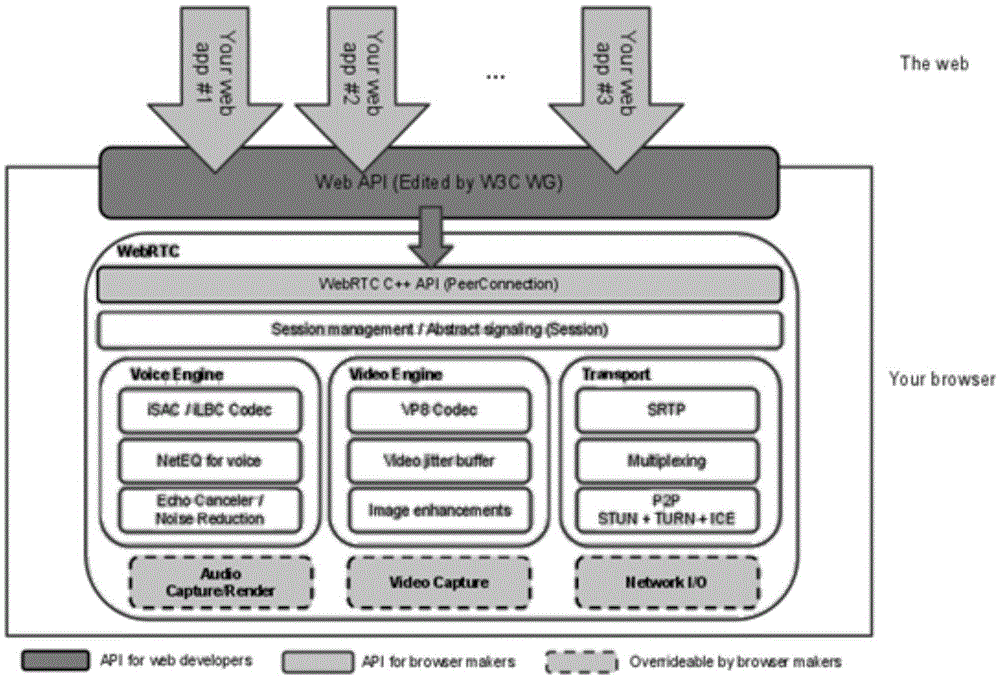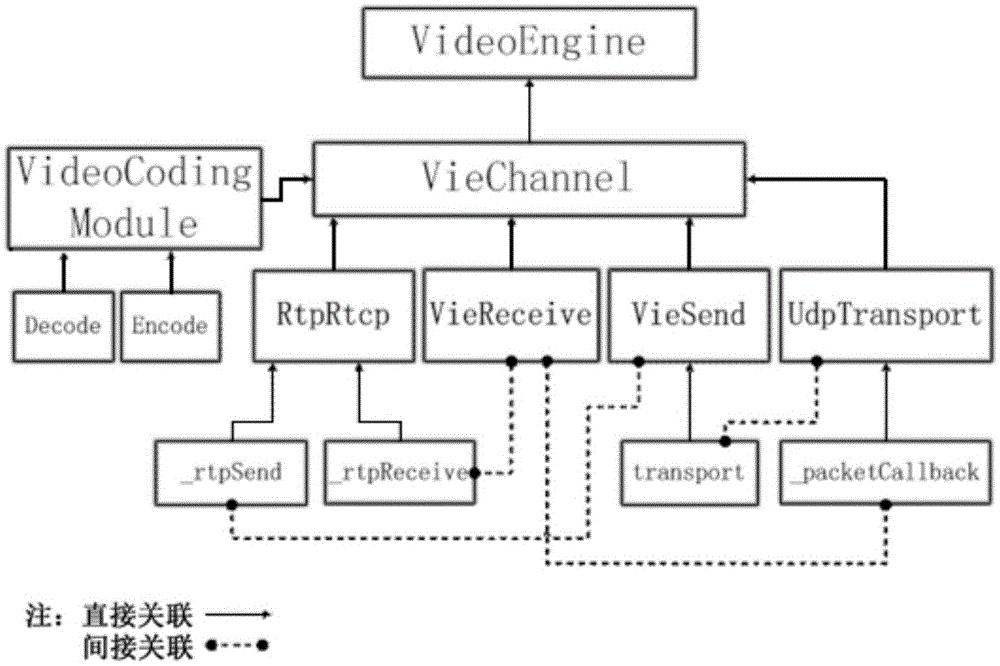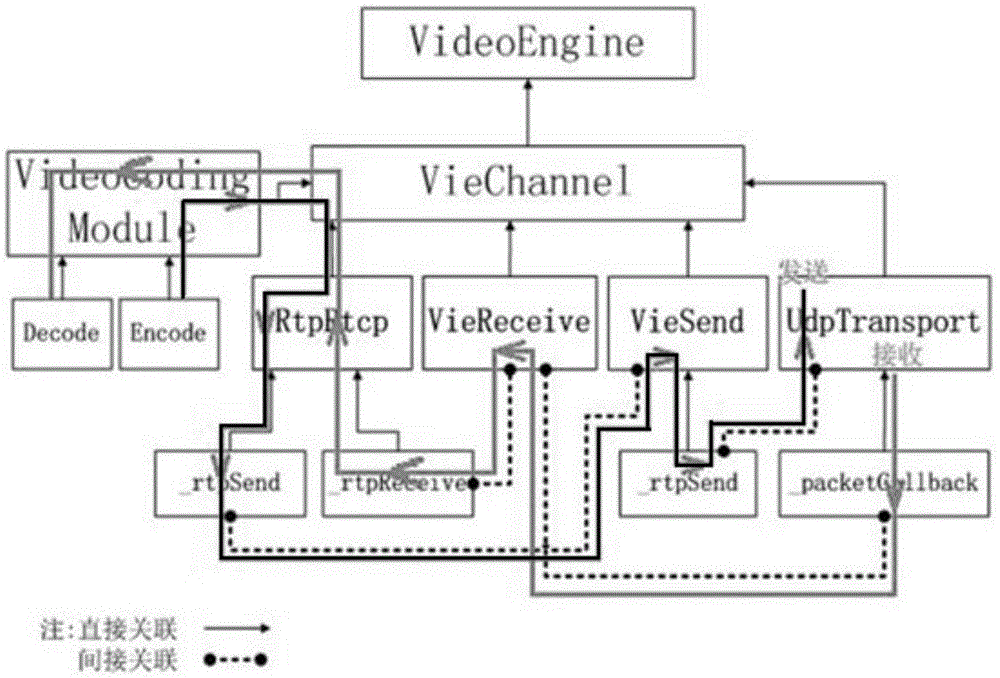Video data sending method and device and video data receiving method and device for WebRTC
A technology of video data and sending method, applied in the fields of video data sending method and device, receiving method and device, capable of solving problems such as incompatibility of video conferencing products, and achieving the effect of wide application
- Summary
- Abstract
- Description
- Claims
- Application Information
AI Technical Summary
Problems solved by technology
Method used
Image
Examples
Embodiment 1
[0062] Such as Figure 4 and 5 As shown, this embodiment provides a method for sending video data for WebRTC, and the functions used in this embodiment are all functions in WebRTC, including the following steps:
[0063] S11: Acquire uncoded video data, which is mainly YUV (I420) data in this embodiment.
[0064] S12: Input the unencoded video data into the H.264 encoder for encoding. Specifically, the function Encode(...) is used to send the acquired YUV (I420) data into the H.264 encoder for encoding. H.264, which is also the tenth part of MPEG-4, is proposed by the Joint Video Team (JVT, Joint Video Team) jointly composed of ITU-T Video Coding Experts Group (VCEG) and ISO / IEC Motion Picture Experts Group (MPEG). Compressed digital video codec standard. The H.264 encoder is used to compress the acquired raw data for transmission.
[0065] S13: Obtain encoded video data encoded by the H.264 encoder.
[0066] S14: Pack the encoded video data according to the packet cutti...
Embodiment 2
[0091] Such as Figure 5 and 6 As shown, the present embodiment provides a video data receiving method for WebRTC, and the functions used in the present embodiment are all functions that come with WebRTC, including the following steps:
[0092] S21: Receive encoded video data packets, that is, RTP packets.
[0093] S22: Analyzing and framing the received encoded video data packets according to the framing method of the H.264 format;
[0094] S23: Input the framed encoded video data to the H.264 decoder for decoding. Specifically, the function Decode(...) is used to send the received encoded video data packets to the H.264 decoder for decoding.
[0095] The above video data receiving method for WebRTC, such as Figure 5As shown, by adding the H.264 decoder to WebRTC and adding the H.264 format framing method to the receiving point of the RtpRtcp module in WebRTC, the support for the H.264 standard is added to WebRTC. It mainly involves the VideoCoding and RtpRtcp modules i...
Embodiment 3
[0113] This embodiment provides a video data sending method and a video data receiving method for WebRTC, including the video data sending method for WebRTC described in Embodiment 1 and the video data receiving method for WebRTC described in Embodiment 2 method.
[0114] The above video data sending method and video data receiving method for WebRTC, by adding the H.264 codec to WebRTC, adding the H.264 standard packet cutting method at the sending point of its RtpRtcp module and adding H.264 at the receiving point The standard framing method adds support for the H.264 standard in WebRTC. As a result, WebRTC is compatible with the current mainstream H.264 video conferencing products in terms of encoding and decoding algorithms and receiving and sending media streams. Combined with WebRTC's own good network adaptability, it can be more widely used in the field of video conferencing.
[0115] Applying the above method for sending and receiving video data for WebRTC to an Andro...
PUM
 Login to View More
Login to View More Abstract
Description
Claims
Application Information
 Login to View More
Login to View More - R&D
- Intellectual Property
- Life Sciences
- Materials
- Tech Scout
- Unparalleled Data Quality
- Higher Quality Content
- 60% Fewer Hallucinations
Browse by: Latest US Patents, China's latest patents, Technical Efficacy Thesaurus, Application Domain, Technology Topic, Popular Technical Reports.
© 2025 PatSnap. All rights reserved.Legal|Privacy policy|Modern Slavery Act Transparency Statement|Sitemap|About US| Contact US: help@patsnap.com



